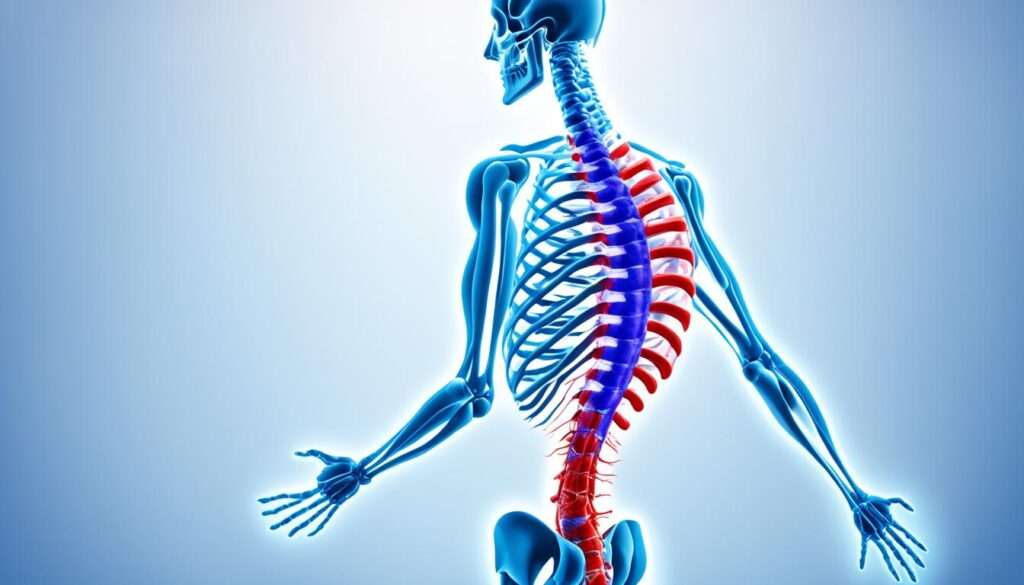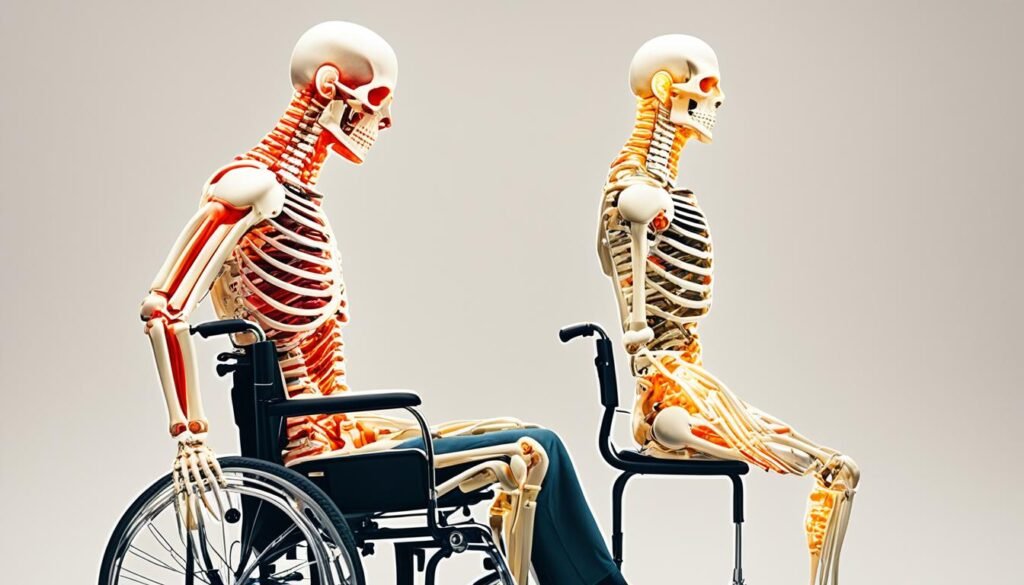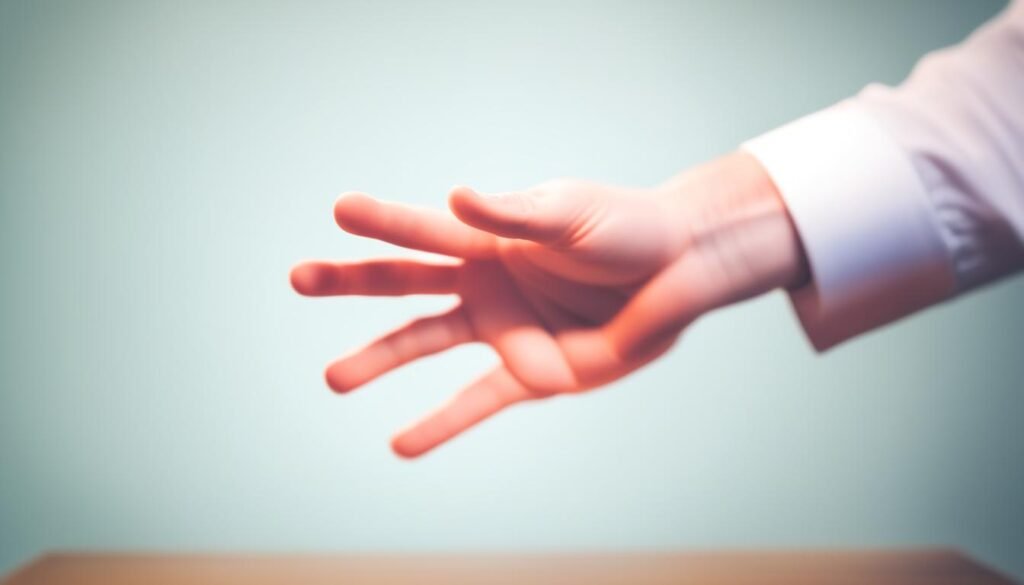Brown Sequard syndrome (BSS) is a rare neurological condition that affects the spinal cord. It is characterized by muscle weakness or paralysis on one side of the body and a loss of sensation on the opposite side. This condition is named after Charles-Édouard Brown-Séquard, who first described it in 1849.
Brown sequard syndrome symptoms may appear confusing at first. One side of the body might feel weak, while the other feels pain or heat differently. Sounds odd, right? But there’s a clear reason behind it, and we’ll explain it simply in this blog.
In this blog, we will break down everything you need to know about brown sequard syndrome symptoms. We’ll talk about what causes it, how it shows up in the body, how doctors diagnose it, and how it can be treated.
Key Takeaways:
- Brown Sequard syndrome is a rare neurological condition that affects the spinal cord.
- It is characterized by muscle weakness or paralysis on one side of the body and a loss of sensation on the opposite side.
- This condition typically occurs as a result of trauma such as a gunshot or stab wound.
- Early diagnosis and appropriate management are important for improving the patient’s quality of life.
- Treatment focuses on managing the underlying cause and providing supportive care to improve function and independence.
Table of Contents
ToggleUnderstanding Brown Sequard Syndrome
The spinal cord is a cylindrical structure that runs through the center of the spine. It carries nerve bundles and cells that transmit messages between the brain and the rest of the body. Brown Sequard syndrome occurs when there is damage to only one side of the spinal cord in a specific area. This results in muscle weakness or paralysis on one side of the body and a loss of sensation on the opposite side. It is important to note that Brown Sequard spinal cord injury, meaning that some sensory or motor function is still preserved below the level of the injury.
Schematic representation of the spinal cord

In Brown Sequard syndrome, the damage to the spinal cord typically affects a specific segment, leading to a disruption in the transmission of signals along the affected side of the body. This can result in a range of symptoms depending on the location and severity of the injury. While muscle weakness or paralysis occurs on the same side as the damage, the loss of sensation is observed on the opposite side.
Brown Sequard syndrome is caused by various factors, most commonly trauma such as gunshot or stab wounds. However, inflammation or compression of the spinal cord can also lead to this condition in some cases. Understanding the underlying cause and the specific segment of the spinal cord affected is crucial in determining the appropriate treatment approach and managing the symptoms.
It is important to seek medical attention if you experience any unusual symptoms or suspect a spinal cord injury. A thorough evaluation, including imaging tests like magnetic resonance imaging (MRI), can help confirm the diagnosis of Brown Sequard syndrome and determine the appropriate course of treatment.
Causes of Brown Sequard Syndrome
Brown Sequard syndrome can be caused by various factors, with trauma being the most common cause. Penetrating injuries, such as gunshot or stab wounds, can result in damage to the spinal cord, leading to this syndrome. Additionally, inflammation or pinching of the spinal cord can also be responsible for causing Brown Sequard syndrome. Other possible causes include tumors, cysts, multiple sclerosis, and infectious diseases like tuberculosis or meningitis.
It is essential to note that Brown Sequard syndrome can occur in anyone, regardless of gender. However, it is considered to be a rare condition.

Possible Causes of Brown Sequard Syndrome:
| Cause | Description |
|---|---|
| Trauma | Penetrating injuries like gunshot or stab wounds |
| Inflammation | Inflammation of the spinal cord |
| Pinching | Compression or pinching of the spinal cord |
| Tumors | Abnormal growths in or near the spinal cord |
| Cysts | Fluid-filled sacs in the spinal cord or brain |
| Multiple sclerosis | An autoimmune disease affecting the central nervous system |
| Infectious diseases | Diseases like tuberculosis or meningitis |
Difference between Brown Sequard Syndrome and Central Cord Syndrome
While both Brown Sequard syndrome and central cord syndrome are forms of incomplete spinal cord injury, they are distinct conditions. Brown Sequard syndrome occurs when there is damage to only one side of the spinal cord, resulting in symptoms on that side of the body. On the other hand, central cord syndrome involves damage to the center of the spinal cord, usually in the neck.
In Brown Sequard syndrome, the symptoms are typically more pronounced on the side of the body opposite the injury. For example, if the injury occurs on the right side of the spinal cord, there will be muscle weakness or paralysis on the left side of the body and a loss of sensation on the right side.
In central cord syndrome, there is typically more pronounced weakness in the arms compared to the legs. This is because the nerves that control arm movements are located in the center of the spinal cord, while the nerves that control leg movements are located more towards the outer edges.
Here is a comparison between the two conditions:
| Brown Sequard Syndrome | Central Cord Syndrome |
|---|---|
| Damage to one side of the spinal cord | Damage to the center of the spinal cord |
| Symptoms on the opposite side of the body | Pronounced weakness in the arms |
| Loss of sensation on the same side of the body | Legs may be less affected |
In summary, while both Brown Sequard syndrome and central cord syndrome are forms of incomplete spinal cord injury, they present with different patterns of symptoms. Brown Sequard syndrome involves damage to one side of the spinal cord, resulting in symptoms on that side of the body, while central cord syndrome involves damage to the center of the spinal cord, usually with more pronounced weakness in the arms.

Who Does Brown Sequard Syndrome Affect?
Brown Sequard syndrome is a rare condition that can affect anyone, regardless of age or demographic factors.
It is known that this syndrome affects people assigned female at birth and people assigned male at birth in equal numbers. It does not discriminate based on gender or any other factor. Whether you are a man or a woman, you are at an equal risk of developing Brown Sequard syndrome.
This rare condition can occur in individuals of all ages, from infants to the elderly. However, it is important to note that Brown Sequard syndrome is a relatively uncommon neurological condition.

Having a better understanding of who may be affected by Brown Sequard syndrome can help raise awareness and promote early detection and treatment.
How Common is Brown Sequard Syndrome?
Brown Sequard syndrome, although rare, is a condition that can occur as a result of traumatic spinal cord injuries. Approximately 2% to 4% of traumatic spinal cord injuries are estimated to lead to Brown Sequard syndrome. In the United States alone, there are around 12,000 new cases of traumatic spinal cord injuries reported each year.
While Brown Sequard syndrome is considered to be a rare condition, its impact on individuals who experience traumatic spinal cord injuries should not be overlooked. Understanding the prevalence of this syndrome can help healthcare professionals, researchers, and patients gain insights into its nature and develop more effective treatment strategies.

Brown Sequard Syndrome Symptoms
Let’s break down the typical brown sequard syndrome symptoms. They follow a very specific pattern, depending on which part of the spinal cord is damaged.
Classic Presentation: The “Hemisection Pattern”
The symptoms appear on opposite sides of the body, depending on what type of nerve is affected.
- On the same side of the injury (ipsilateral):
- Weakness or full paralysis
- Loss of touch and position sense (proprioception loss)
- On the opposite side of the injury (contralateral):
- Loss of pain and temperature sensation (contralateral sensory loss)
This unusual pattern is key to identifying brown sequard syndrome symptoms.
Sensory Symptoms to Watch For
If you or a loved one notice these signs, see a doctor immediately.
- On the injured side:
- Cannot feel vibration or know body position
- May drop things or have clumsy hands/feet
- On the opposite side:
- Pain or heat may not be felt properly
- May feel burning or tingling
Tingling, numbness, and mixed sensations are very common segmental neurologic deficits.
Motor Symptoms
The side of the body where the injury happened will show these motor function impairment signs:
- Trouble moving the arm or leg
- Difficulty walking straight
- Muscle tightness (spasticity) may increase over time
Over weeks or months, muscles may get thinner due to lack of use. That’s called muscle wasting.
Autonomic and Reflex Symptoms
In some advanced cases, there are problems with automatic body functions:
- Trouble controlling bladder or bowel movements
- Reflexes may be odd. For example, the Babinski sign (big toe moves up when it should go down) may appear.
These are serious spinal trauma complications that need medical attention.

| Symptom | Side of the Body |
|---|---|
| Sensory Loss (vibration and position sense) | On the same side as the spinal cord injury |
| Muscle Weakness or Paralysis | On the same side as the spinal cord injury |
| Loss of Pain and Temperature Sensation | On the opposite side of the spinal cord injury |
Early vs Late Symptoms of Brown Sequard Syndrome
Recognizing the phase of symptoms helps in planning treatment. Symptoms change from early (acute) to later (chronic) stages.
Acute Phase (0–72 hours)
- Sudden weakness or numbness on one side
- Sharp or burning pain at the level of injury
- Reflexes may go missing temporarily
Subacute/Chronic Phase (3+ days)
- Spastic muscles that resist movement
- Muscle thinning in arms or legs
- Problems balancing or walking
In this phase, patients may adapt or may face worsening neurological deficit in brown sequard syndrome.
How is Brown Sequard Syndrome Symptoms Diagnosed?
Doctors use both physical tests and medical scans.
- Clinical exam: Tests for muscle strength, sensation, and reflexes.
- Dermatomal testing: Checks which nerves are working properly on each side.
- MRI scan: The best test to see the spinal cord.
- CT scans or spinal X-rays: To look for fractures or tumors.
- Blood tests: Check for infections or autoimmune conditions.
A full neurological exam can show incomplete spinal injury clearly.
Treatment and Management of Brown Sequard Syndrome
When it comes to Brown Sequard syndrome treatment, there is no specific treatment available. However, the focus is on managing the underlying cause of the syndrome and providing supportive care to improve the patient’s quality of life. This involves a combination of medications, devices, and therapies.
Medications
Medications may be prescribed to help control muscle symptoms and alleviate pain. These can include:
- Analgesics: to manage pain
- Spasticity medications: to reduce muscle stiffness and spasms
- Antidepressants: to address mood changes and promote emotional well-being
- Anticonvulsants: to manage seizures, if present
Devices and Assistive Technology
Devices and assistive technology play a crucial role in enhancing mobility and independence for individuals with Brown Sequard syndrome. Some commonly used devices include:
- Orthotic braces to support weakened muscles and improve stability
- Wheelchairs or mobility scooters for individuals with significant mobility impairments
- Limb supports and walking aids for balance and gait assistance
- Adaptive tools for daily activities such as dressing, eating, and personal care
Physical and Occupational Therapy
Physical and occupational therapy are essential components of the management plan for Brown Sequard syndrome. These therapies aim to improve muscle strength, flexibility, balance, and coordination, as well as enhance fine motor skills and functional abilities. Therapists employ various techniques, exercises, and modalities tailored to the individual’s specific needs and goals.
Surgical Interventions
In severe cases of Brown Sequard syndrome where there is significant compression or damage to the spinal cord, surgical intervention may be considered. Decompression surgery aims to relieve pressure on the spinal cord and stabilize the spine. The specific surgical procedures will depend on the underlying cause and the location of the injury.
By addressing the underlying cause and providing supportive care, individuals with Brown Sequard syndrome can experience improvements in their quality of life and functional abilities. The treatment approach is multidisciplinary and may involve collaboration between neurologists, orthopedic surgeons, physical therapists, occupational therapists, and other healthcare professionals.
Conclusion
The prognosis for individuals with Brown Sequard syndrome can vary based on the cause and severity of the spinal cord injury. While recovery is possible, it is important to understand that the timeline and extent of recovery differ among patients. However, with dedicated rehabilitation and physical therapy, individuals with Brown Sequard syndrome can significantly improve their quality of life and regain some level of independence.
Rehabilitation and physical therapy are crucial components of the treatment plan for Brown Sequard syndrome. These therapies aim to help individuals regain function and enhance their overall well-being. Through personalized exercises and interventions, rehabilitation specialists assist patients in strengthening their muscles, improving coordination, and enhancing mobility.
It is important to note that rehabilitation and recovery for Brown Sequard syndrome require a multidisciplinary approach. In addition to physical therapy, individuals may also benefit from occupational therapy, which focuses on enhancing daily living skills, and psychological support to manage emotional challenges associated with the condition.
With appropriate care, support, and active participation in rehabilitation, many individuals with Brown Sequard syndrome can achieve significant recovery and improve their overall prognosis. While the journey may be challenging, it is important to remain optimistic and seek guidance from healthcare professionals who specialize in spinal cord injuries. Remember, every step towards recovery, no matter how small, is a milestone in your journey towards regaining functionality.
FAQ
What is Brown Sequard syndrome?
Brown Sequard syndrome is a rare neurological condition that occurs as a result of damage to the spinal cord. It is characterized by muscle weakness or paralysis on one side of the body and a loss of sensation on the opposite side.
What causes Brown Sequard syndrome?
The most common cause of Brown Sequard syndrome is trauma, particularly penetrating injuries like gunshot or stab wounds. However, inflammation or pinching of the spinal cord can also lead to this condition in some cases.
What is the difference between Brown Sequard syndrome and central cord syndrome?
Brown Sequard syndrome occurs when there is damage to only one side of the spinal cord, resulting in symptoms on that side of the body. Central cord syndrome involves damage to the center of the spinal cord, usually in the neck.
Who does Brown Sequard syndrome affect?
Brown Sequard syndrome can affect anyone, regardless of gender or other demographic factors.
How common is Brown Sequard syndrome?
Brown Sequard syndrome is a rare condition. Approximately 2% to 4% of traumatic spinal cord injuries are estimated to result in Brown Sequard syndrome.
What are the common symptoms of Brown Sequard syndrome?
The common symptoms of Brown Sequard syndrome include sensory loss on one side of the body, muscle weakness or paralysis on the same side, and a loss of pain and temperature sensation on the opposite side.
How is Brown Sequard syndrome diagnosed?
The diagnosis of Brown Sequard syndrome is typically made based on the patient’s history and physical examination. Additional diagnostic tests such as magnetic resonance imaging (MRI) or X-rays may be ordered to confirm the diagnosis or evaluate the underlying cause of the syndrome.
Is there a specific treatment for Brown Sequard syndrome?
There is no specific treatment for Brown Sequard syndrome. The focus is on managing the underlying cause of the syndrome and providing supportive care to improve the patient’s quality of life.
What is the prognosis for individuals with Brown Sequard syndrome?
The prognosis for individuals with Brown Sequard syndrome varies depending on the cause of the spinal cord injury and the extent of damage. While recovery is possible, the timeline and extent of recovery can vary greatly among patients. Rehabilitation and physical therapy play a crucial role in helping individuals with Brown Sequard syndrome regain function and improve their quality of life.
Source Links
About The Author

This article is medically reviewed by Dr. Chandril Chugh, Board-Certified Neurologist, providing expert insights and reliable health information.
Dr. Chandril Chugh is a U.S.-trained neurologist with over a decade of experience. Known for his compassionate care, he specializes in treating neurological conditions such as migraines, epilepsy, and Parkinson’s disease. Dr. Chugh is highly regarded for his patient-centered approach and dedication to providing personalized care.
→ Book a consultation to discover which remedies suit your needs best.




